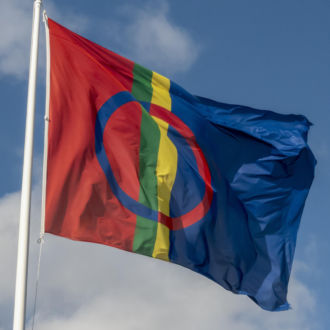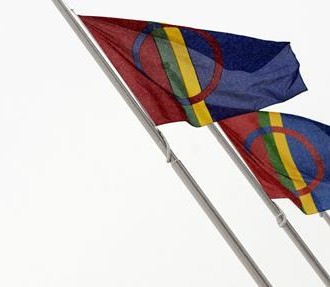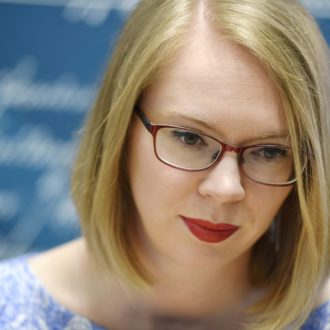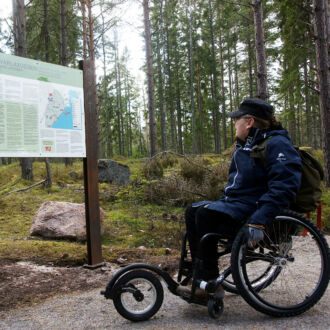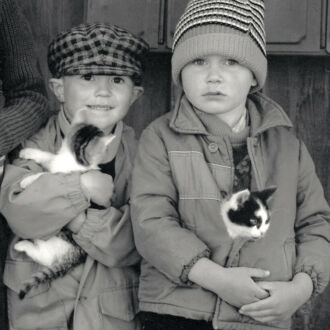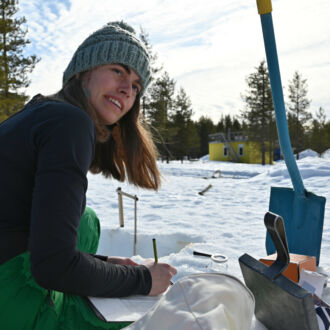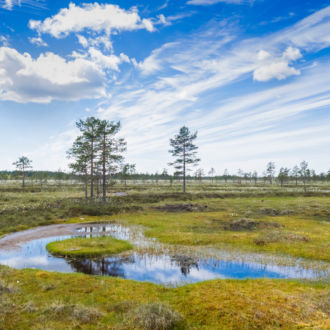The Siida Sámi Museum and Nature Centre, located in the far-northern town of Inari, Finland, reopened in 2022 after renovations and the installation of a new permanent exhibition, These Lands Are Our Children. The museum then proceeded to break all previous attendance records.
The Sámi are the only recognised Indigenous People in the EU area. Their northern homeland, called Sápmi, is divided into four parts by the borders of the nation-states Finland, Sweden, Norway and Russia.
In addition to the museum, the Siida building also houses a shop, a restaurant, Inari Tourist Information and the Northern Lapland Nature Centre, run by Metsähallitus, the state-owned enterprise that manages Finland’s national parks. Metsähallitus also worked together with the museum on designing These Lands Are Our Children.
You’re in the north now

These bilingual signs at the Norwegian border in northeastern Finland tell you where you are in Finnish and in Northern Sámi.Photo: Ritva Siltalahti/Lehtikuva
Siida, whose name is a Northern Sámi word referring to a home village or community, presents Sámi culture together with Arctic nature. Museumgoers soon perceive the clear ties between the two.
While Siida is not exactly difficult to reach, you do have to make some effort: Inari is 1,000 kilometres (620 miles) north of Helsinki, at a latitude matching that of northern Alaska. During one typical summer week, I spotted license plates in the parking lot from Finland, Norway, Sweden, Estonia, Denmark, Germany, the Netherlands, Belgium, Luxembourg, France, Spain, Italy, Slovenia, Switzerland and Poland.
A landscape full of landmarks
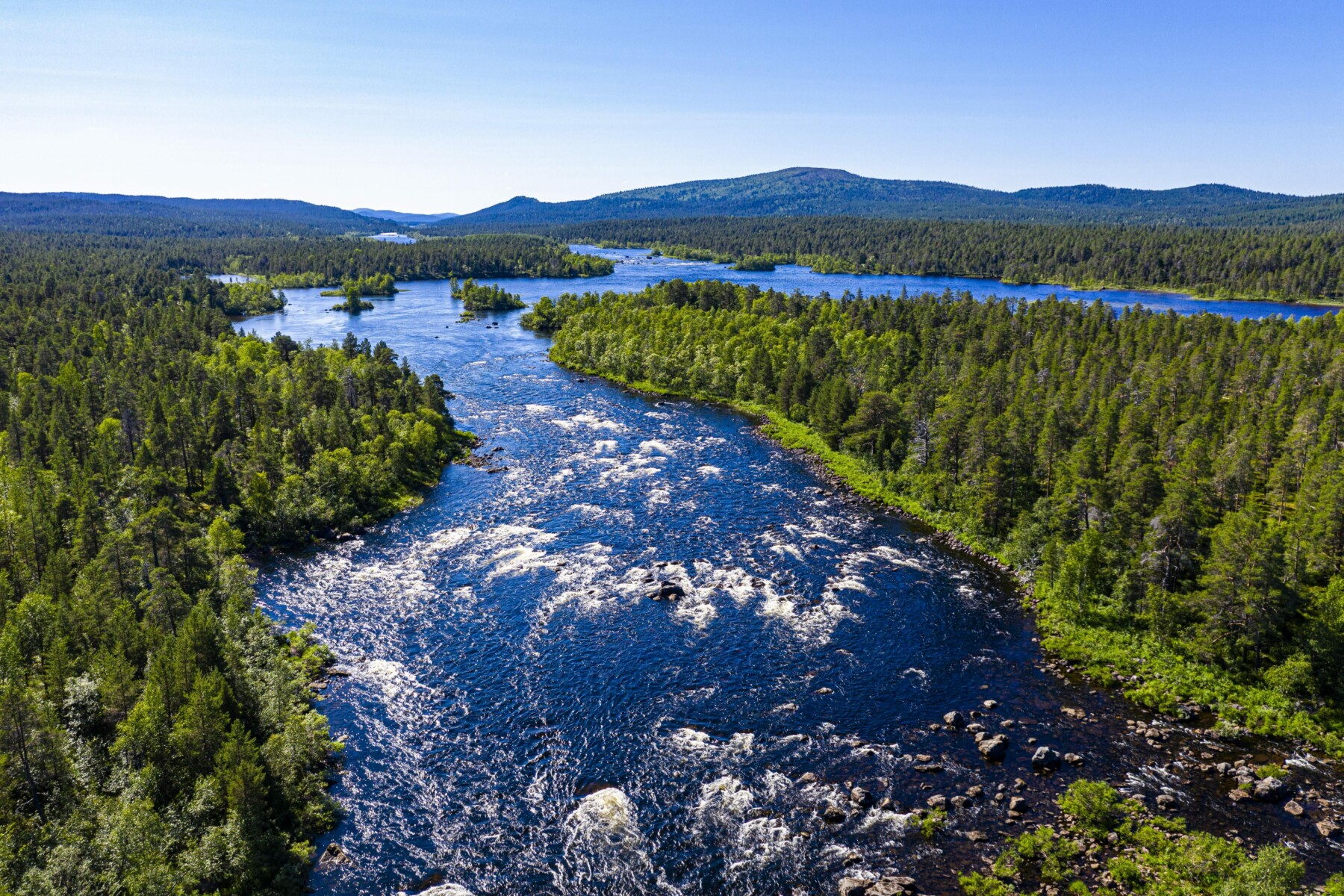
A river called Juutuanjoki in Finnish and Juvduujuuhâ in Inari Sámi eventually flows past Siida and into Lake Inari.Photo: Michael Runkel/ImageBroker/Lehtikuva
The museum galleries are on the second floor. Initial exhibits provide historical, cultural, linguistic and geological orientation about Sápmi and the Sámi before you enter the main hall.
In an expansive square room, 12 massive photographs stretch across the walls, three to a side, lit from behind. Each picture was taken in a different month of the year and shows a landmark Sápmi landscape, many of them in national parks or nature preservation areas: Kevo Canyon in April, the rivers Tenojoki and Lemmenjoki (in June and July), Lake Inari (October), the peaks of Paistunturi and Hammastunturi (December and January).
On smaller accompanying panels, you can tap a screen for more specifics about what you’re seeing, including details about wildlife, vegetation, geology and history. You can toggle to maps, month-by-month temperature charts and graphs showing the extent of daylight hours (here in the far north, they vary dramatically, from zero hours in the winter to 24 hours in the summer).
The info is available in six languages. They include the three different Sámi languages spoken in Finland – Inari Sámi, Northern Sámi and Skolt Sámi – that have status as official languages in the area of Finland that overlaps Sápmi. The others are Finnish and Swedish, which are official languages throughout Finland, and English.
A kind of closer look

In Siida’s main exhibition, you can lose yourself in the detail of the enormous photos of various local landscapes.Photo: Peter Marten
At any museum, different visitors get different things out of the exhibitions. This is especially true of Siida, which presents a complex combination of nature and culture and draws its audience from near and far.
Who you are and how far you’ve journeyed affect how you experience the exhibition. Many visitors have taken a long road north past forests, swamps, lakes and multiple series of rounded peaks that fill the horizon. People may have just finished hiking or skiing through a national park. Some travellers may be feeling a kind of dazed surprise at finding themselves this far north.
Siida offers an additional way to make sense of everything you see out there – a magnifying glass on the boundless landscape. It’s another way of stopping to take a closer look, just as you do if you’re out hiking.
Eight seasons
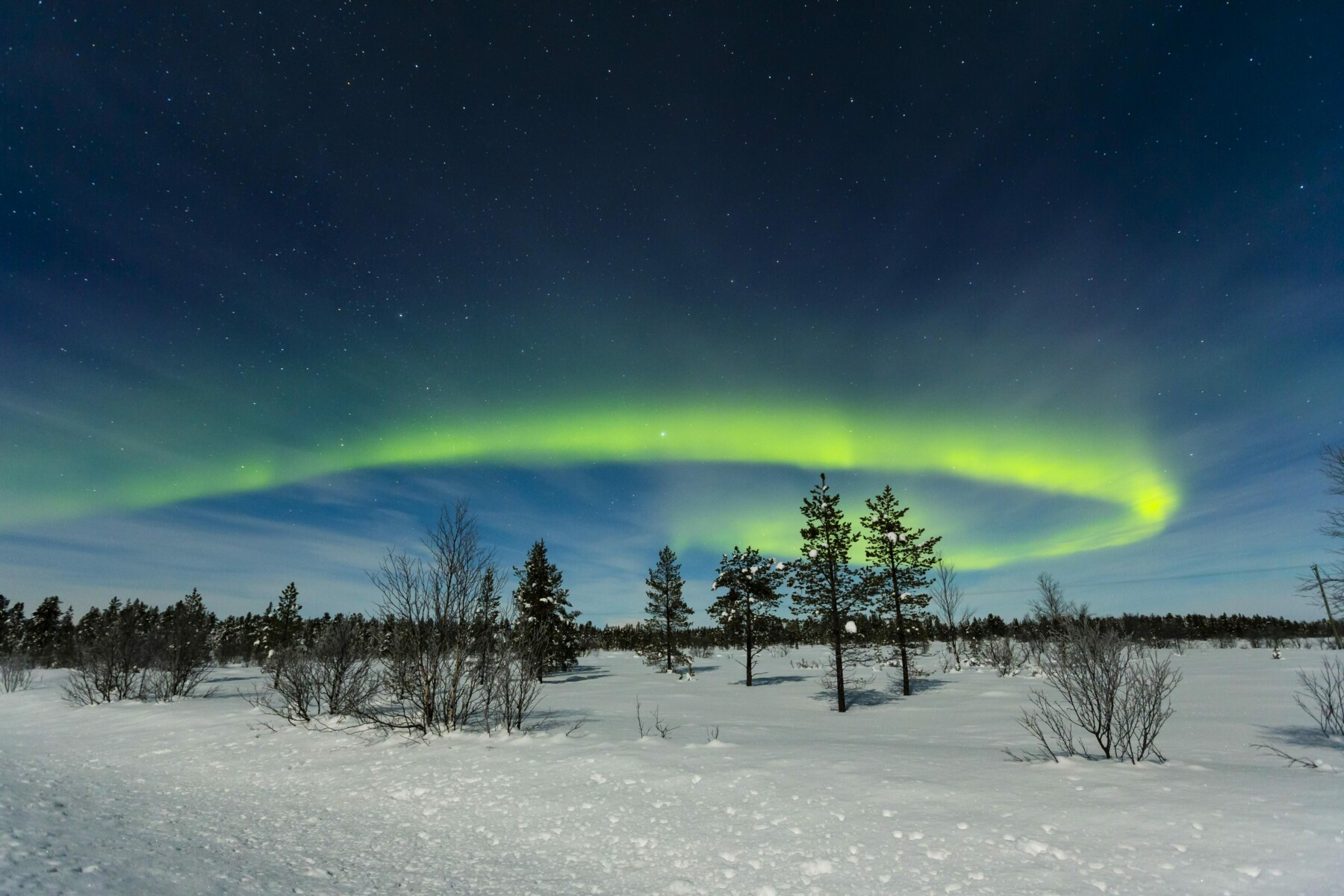
In midwinter the sun doesn’t shine in the far north, but the Northern Lights may make an appearance.Photo: Stephan Rech/ImageBroker/Lehtikuva
If this is your only visit to the far north, the museum shows you what the region looks like during the rest of the year. Outside, it may be summer, when the nights are “nightless” because of the midnight sun. Inside, you might be looking at photos of the polar night, a midwinter period when the only light in the sky may be aurora borealis (the Northern Lights) or the moon.
You’ll also get acquainted with new seasons – the Sámi divide the year into eight seasons, with “spring-summer” coming between spring and summer, “autumn-summer” between summer and autumn, and so on.
Of course, none of that will come as any surprise to museumgoers who are Sámi themselves. For them, Siida can act as a flagship and a cultural resource that contributes to maintaining the shared memory and heritage of the Sámi people.
These Lands Are Our Children contains “the story of Sámi culture, told by the Sámi themselves,” says museum director Taina Pieski in a press release, and “it clearly speaks to both outsiders and the Sámi community.”
A culture that continues
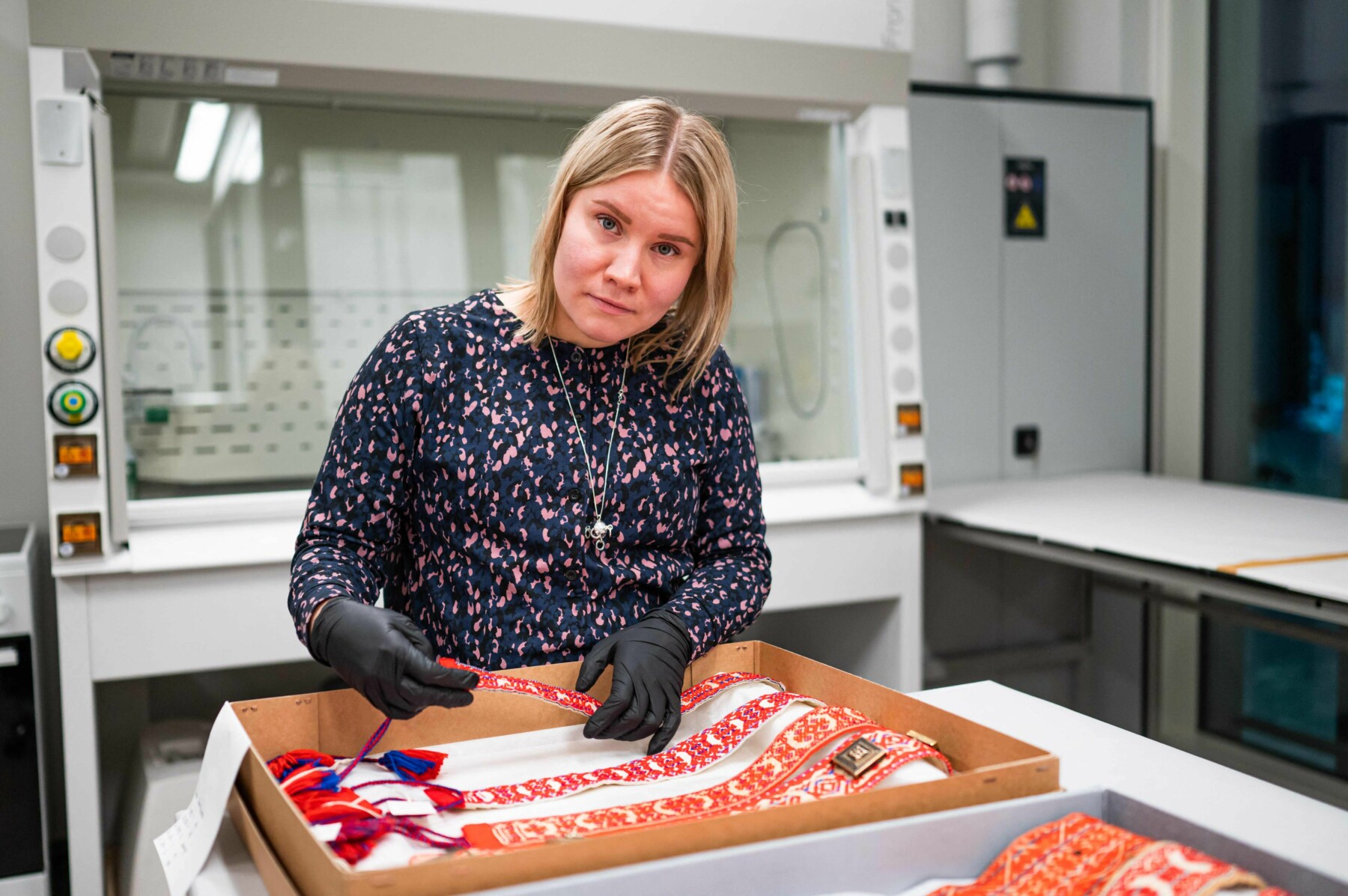
Siida curator Anni Guttorm examines some of the 2,000 Sámi objects repatriated to the Sámi Museum by the Finnish National Museum in 2021.Photo: Jonathan Nackstrand/AFP/Lehtikuva
In the middle of the exhibition hall, videos show modern everyday Sámi life, and glass cases display objects and artefacts from the recent and distant past. They include Sámi duodji (Sámi handicrafts), ládjogahpir (an ornate hat worn by Sámi women) and souvenir T-shirts from Ijahis Idja (Nightless Night), an Indigenous music festival held in Inari every summer.
One video follows a crew that is restoring a river to its pre-1960s condition to provide a better environment for fish. The project draws on Sámi traditional knowledge.
Another display details the “the ancient and fluid relationship between the reindeer and humans.” The Sámi are a “culture based on reindeer” – the animal has “major communal and cultural significance for all Sámi groups,” says the accompanying text.
Annual events such as the reindeer roundup in winter bring families and communities together. Working with reindeer is even an important element of Sámi languages, which contain “a large vocabulary related to reindeer husbandry and nature.”
The renovations at Siida added a new space for the many items in the museum’s collection that are not on display in the exhibitions. With more than 10,000 items, it’s the world’s largest collection of Sámi objects. In addition, it contains thousands of photos. And it has continued to grow: The Finnish National Museum repatriated more than 2,000 Sámi items to Siida in 2021, and the Museum of Northern Ostrobothnia repatriated 400 items in 2024. The return of such objects to the Sámi has “a profound meaning for the Sámi community,” Pieski says.
Poetic writing on the wall
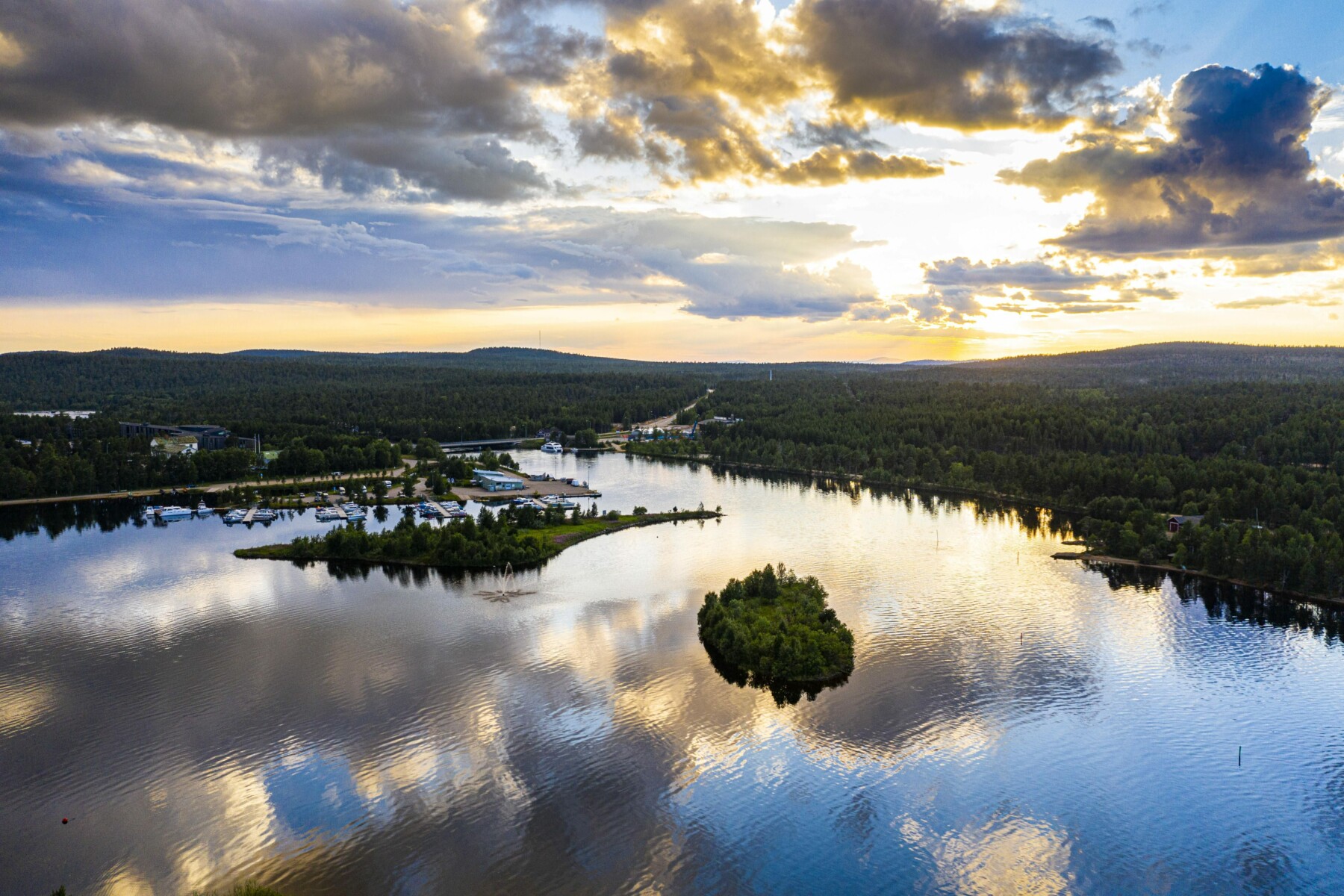
Lake Inari (Aanaarjävri in Inari Sámi) covers an area of more than 1,000 square kilometres (400 square miles).Photo: Michael Runkel/ImageBroker/Lehtikuva
A ramp leads from the lobby up to the exhibition spaces. If you’re too eager to get to the top, you might miss something important on the way.
Lettering on the wall in Inari Sámi, Finnish and English presents a poem by Inari Sámi author and teacher Matti Morottaja (born in 1942). It’s about the significance of the names attached to the locations and features in the landscape, to “each bay and headland,” as the poem says.
“These names are like the walls of a house,” Morottaja writes. They form a “map” – they carry and convey stories, history and signs of life. The way “someone named the bay and its sandy shores” is not that different from the way parents name their children.
Places in the terrain, given names by ancestors, “are older than any person,” the poem says. It ends with the line that gives the exhibition its title: “These lands are our children.”
Past and future generations
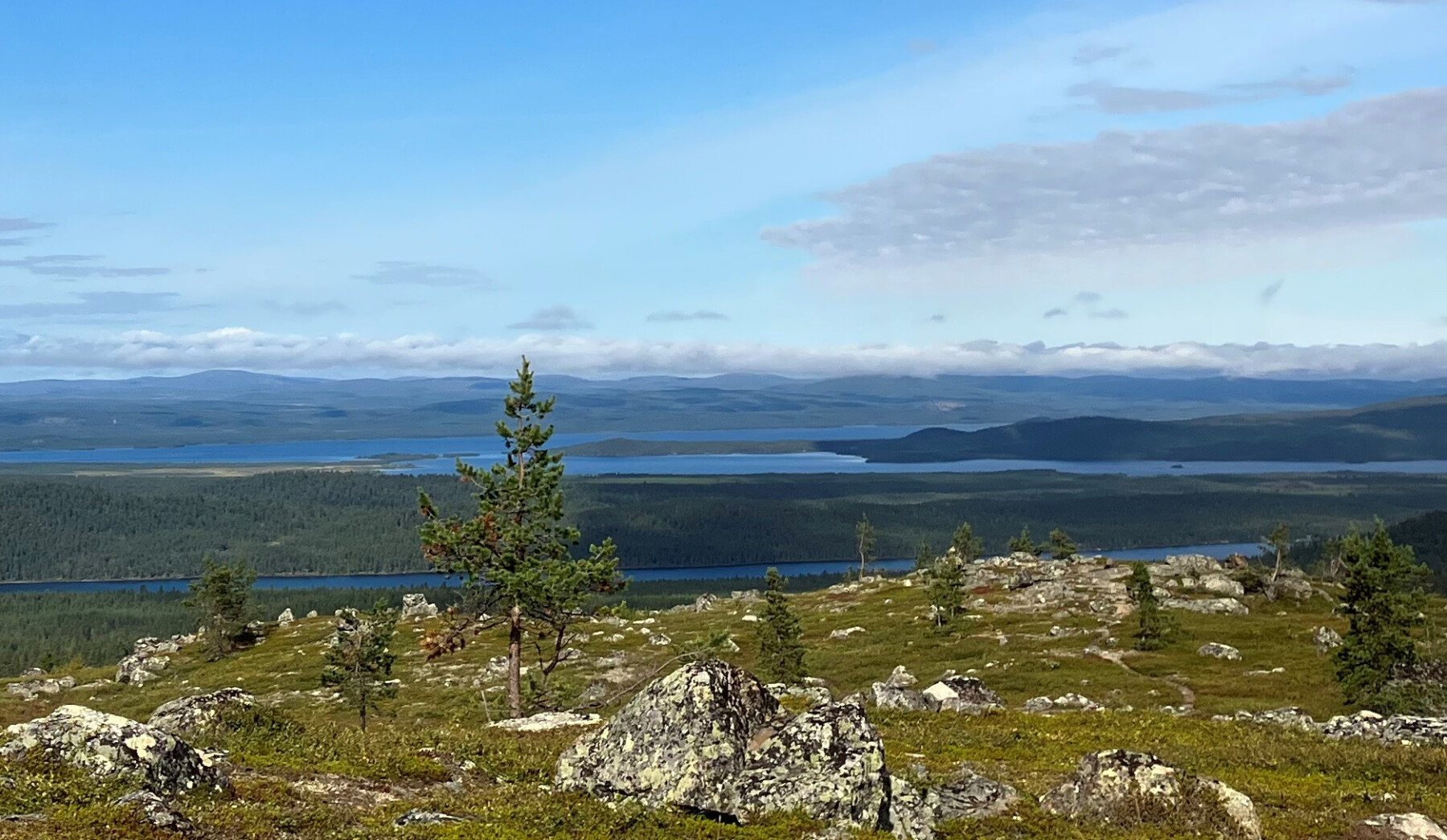
You can see mountains, lakes and the wide-open sky from the top of Otsamo (Ocomâš in Inari Sámi), a peak near the town of Inari (Aanaar).Photo: Peter Marten
How can places be old and still be children? Even without being able to read the poem in the original language, you can still guess that Morottaja and the curators wish to draw visitors’ attention to ideas they’ll find in the exhibition upstairs.
The landscape is older than the people who long ago placed names on its features in Sámi languages or other languages. But if these lands are “children,” they deserve respect and nurture. Or maybe “These lands are our children” means that, in a profound sense, future generations will depend on the land to sustain them, just as we do. It’s their inheritance.
Names and language can help connect people with nature and culture. All the info at Siida, all the words and imagery, goes a long way towards deepening that connection, no matter where you come from.
A trail through history
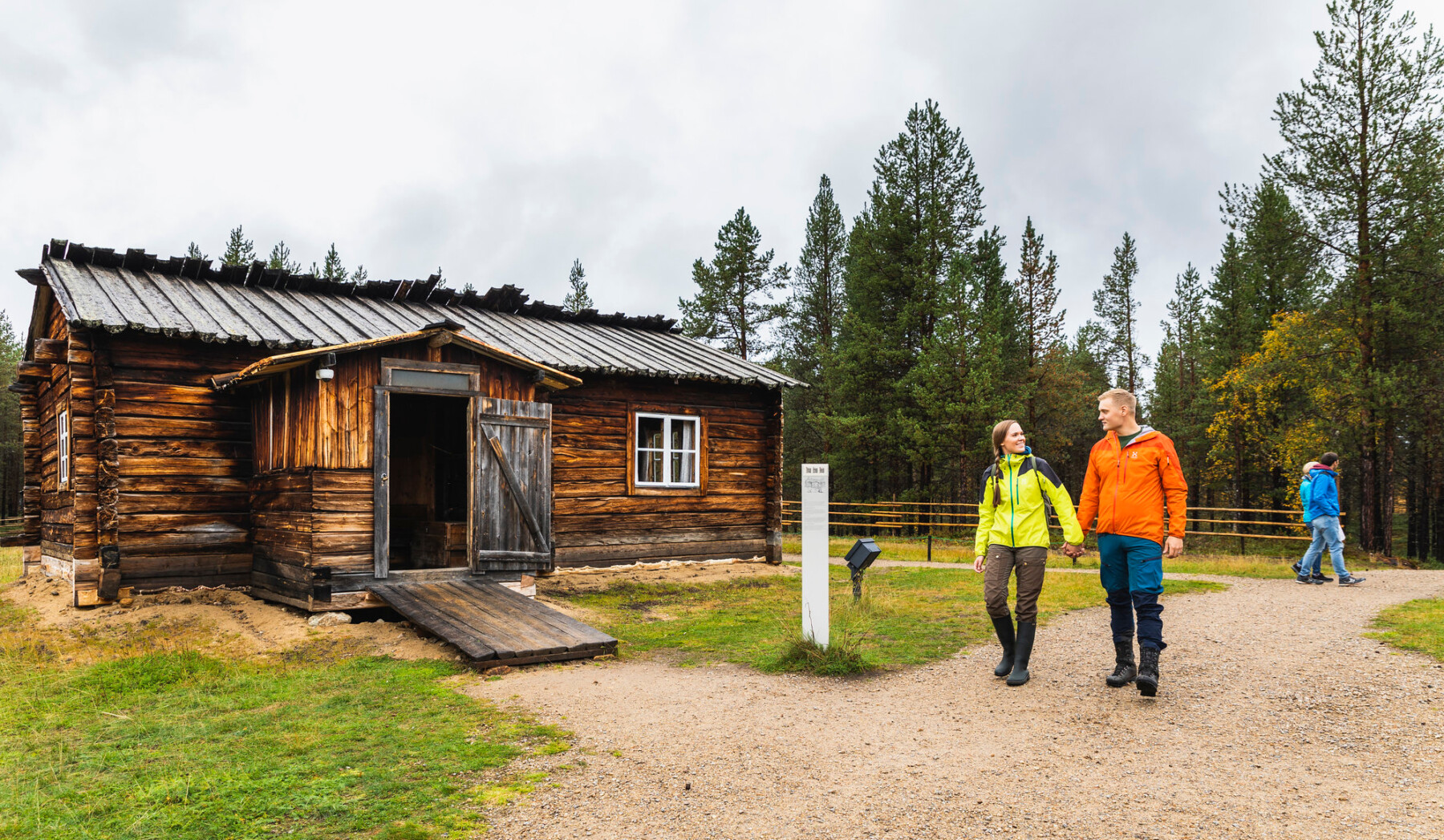
The open-air museum behind Siida features dozens of historic buildings relocated from nearby regions.Photo: Siida Sámi Museum and Nature Centre
Out in back of the Siida building, there’s an extensive open-air museum where a trail leads past about 50 houses, shelters and other structures. They are either historic buildings relocated from nearby regions or reconstructions based on archaeological finds or community knowledge. There are even various contraptions that were used to catch wolves, bears, capercaillies and other animals.
A homestead from the 1800s was brought in from the village of Tirro in 1960. Other buildings include a cabin that served as a courthouse in a remote region until 1905. There’s an entire Skolt Sámi dwelling site with a log hut, shelters for sheep and reindeer, and a treehouse-like storage structure for keeping food out of reach of animals. One building shows off a range of different boats and sleds, two important methods of transport for the Sámi.
The open-air museum opened in 1963 as the Sámi Museum and was the first independent Sámi museum in the Nordic countries. Siida itself opened in 1998.
By Peter Marten, February 2024

